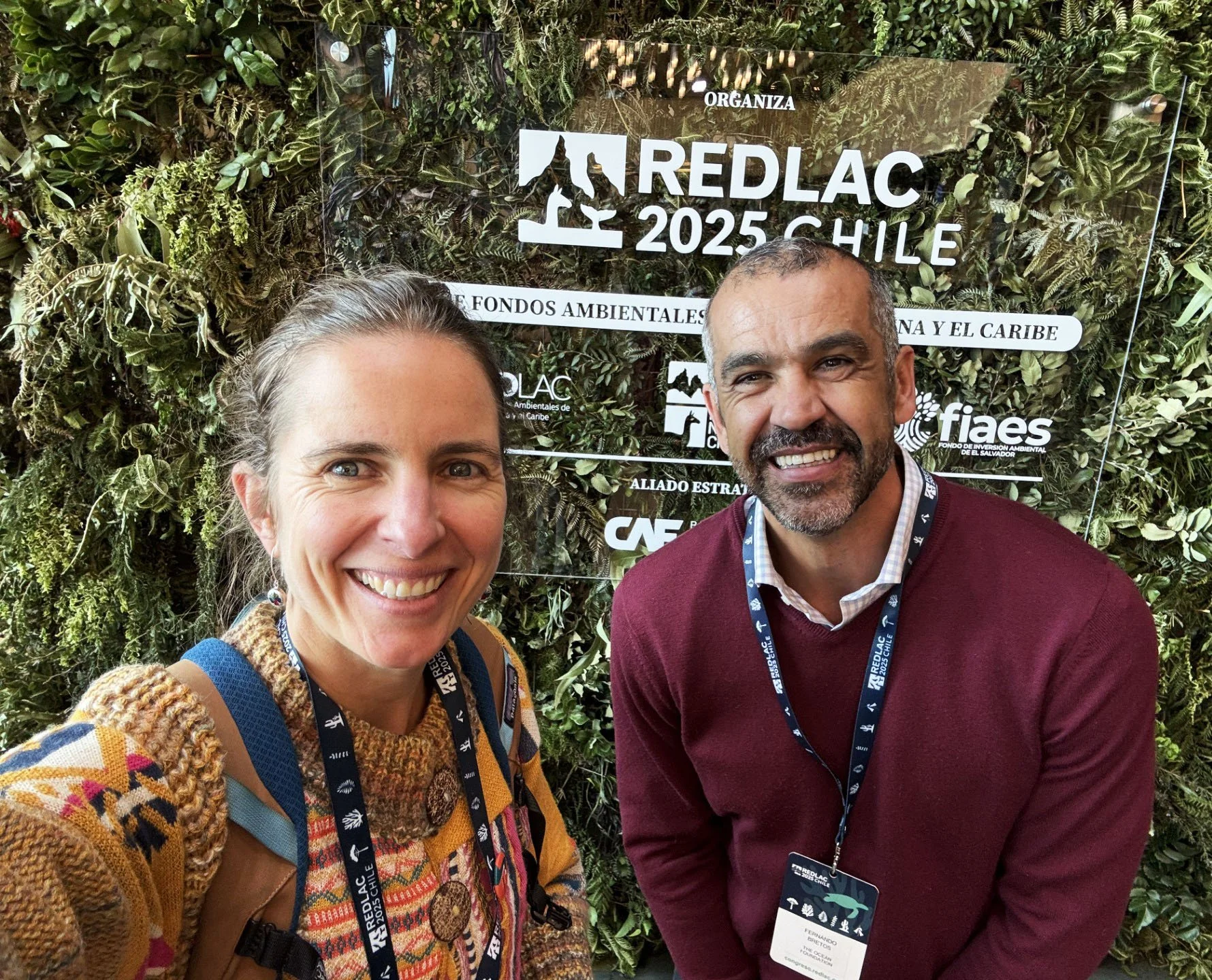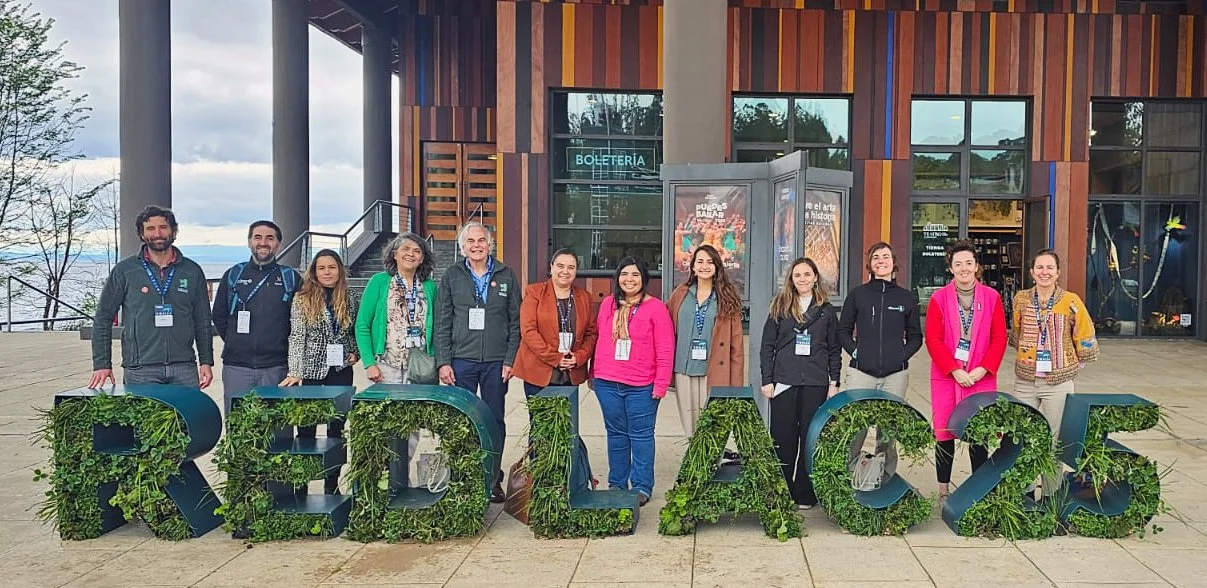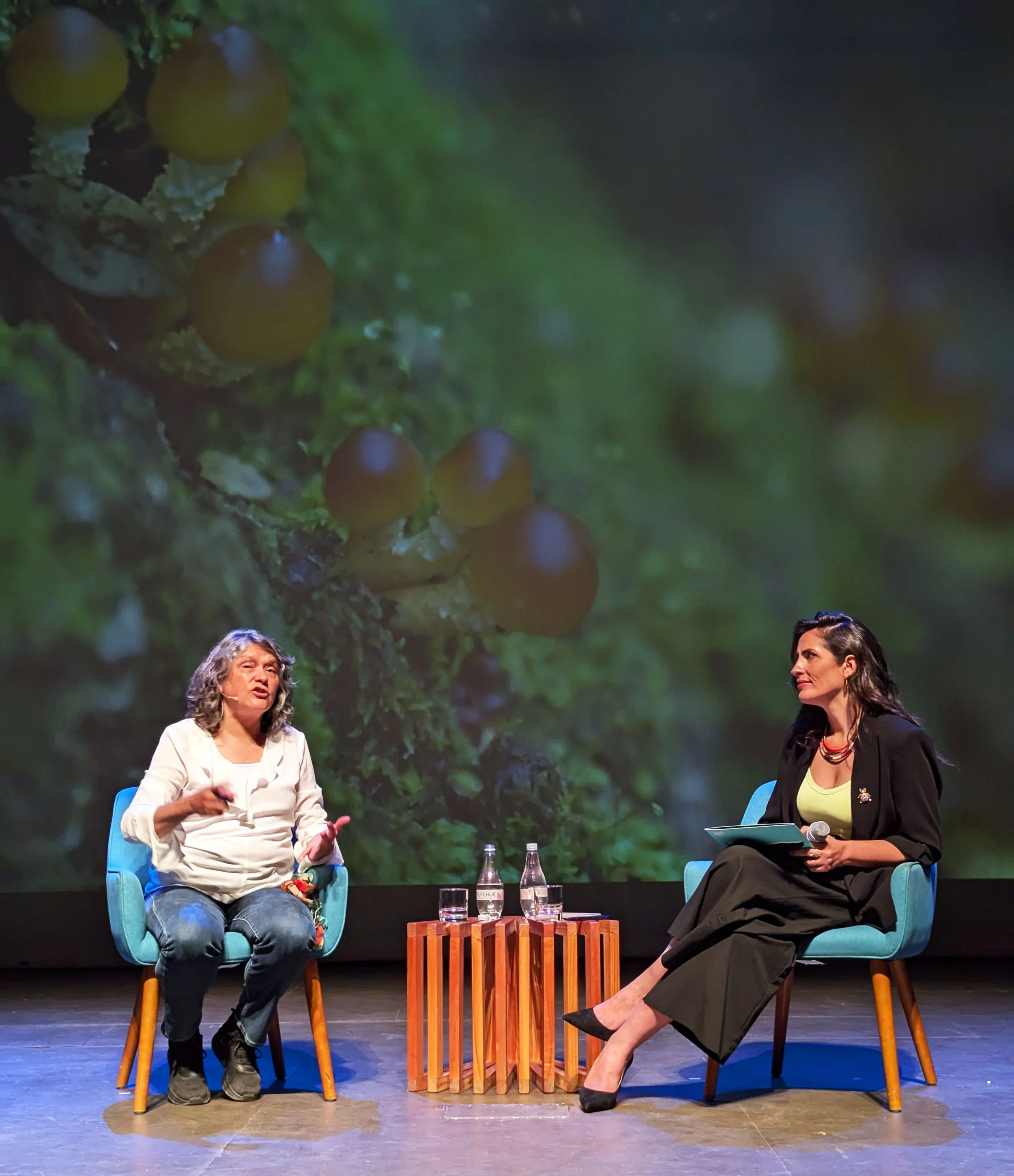By Melissa Carmody
Wildlife Conservation Society
The CFA Incubator is a global program led by the Conservation Finance Alliance (CFA) that supports innovators developing new financial mechanisms to drive sustainable conservation impact.
Melissa Carmody, alongside Cristobal Arredondo, from the Wildlife Conservation Society, Chile, is leading the project, The Karukina Impact Bond, through the CFA Incubator. The Karukinka Impact Bond is an innovative model to secure long-term financing to address the risk of wildfire and invasive species in Karukinka Natural Park, a globally significant 300,000-hectare reserve of old-growth forests and peatlands in Tierra del Fuego, Chile.
In this series of “On the Move” blog posts, you can hear directly from innovators like Melissa, as they build their finance solutions for nature.
RedLAC Congress in Chile
In October, I traveled to Frutillar, Chile to attend the RedLAC Conference. My main goal was networking and learning. Since the conference was hosted by the Chile Nature Fund, it was a unique opportunity to connect with colleagues from various organizations and learn more about the conservation finance initiatives they are developing or exploring — and to identify opportunities to strengthen the mechanism we are designing for Karukinka.
I also participated as part of the group of organizations advising the Chile Nature Fund’s new program on fire and watershed management, which made this conference an ideal setting to meet in person with many of the collaborators involved. Additionally, I had the chance to meet members of Así Conserva Chile, the national network of privately protected areas, with whom I rarely have the opportunity to meet in person.
The Experience
Listening to speakers emphasize the power of stories and narratives as a core element of protected area management — and conservation in general — was deeply encouraging. I was inspired that even when discussing financial mechanisms, conversations often circled back to people and communities. I was particularly moved by how often the importance of recognizing those who tell these stories was raised — and how frequently locals don’t see themselves reflected in protected areas, or even feel threatened by them. There’s a clear need not only to catalyze funding but also to transform the stories we tell, so they become meaningful and relevant for everyone.
The panels were diverse and engaging, but the most valuable moments were the informal ones — connecting with colleagues from other organizations, people I’ve worked with before, or those whose projects have benefited Karukinka or where WCS has contributed to their own developments. In those conversations, you can truly see how years of collective effort converge into a successful project, a new fund, or a strengthened career. It’s inspiring to witness how conservation initiatives, processes, and financial mechanisms are patiently and passionately built by so many dedicated groups.
I also connected with representatives from territorial associations such as Ambiente Sur (Argentina), Fundación MAPA (working on peatlands in Chiloé), Fundación Altos de Cantillana (in central Chile), and Fundación Forecos (focused on native forests and wetlands in south-central Chile). I met people experienced in eradicating invasive species and in structuring financial mechanisms that made those efforts possible, as well as representatives from CAF and the Bezos Earth Fund.
Finally, I was able to reconnect with colleagues from Conservation International, who supported the early development of the Karukinka Bond concept.
It was also great to meet Fernando Bretos, currently participating in the CFA Incubator, and to exchange experiences about the mentoring process — recognizing shared challenges but also a strong enthusiasm for innovating and exploring new approaches to conservation finance.
Key Takeaways
I realized at Redlac that Chile is advancing rapidly in the implementation of financial mechanisms that, until a few years ago, were little known or had not received the level of attention they have elsewhere in Latin America. The establishment and current positioning of the Chile Nature Fund, Chile’s integration into the hemispheric Conserva Aves initiative under the Fund’s leadership, the new framework for issuing sustainability-linked bonds that include biodiversity performance indicators, and the creative mechanisms emerging from the private sector all show that there is real space for innovation and for channeling resources toward conservation.
One of my main takeaways is that there is genuine interest and need for innovation — and that conservation finance is a flexible tool, capable of being designed to meet specific contextual needs. I see that the mechanism we are developing for Karukinka has strong potential to contribute to the management of protected areas facing common threats such as wildfires or invasive species, and whose conservation generates benefits that extend far beyond their borders. These are areas that often struggle with limited funding and capacity to manage it effectively.
Participating in the RedLAC Congress also strengthened my experience as a CFA Incubator project leader. It was a great opportunity to pitch and share the Karukinka Bond concept with others, and I felt confident doing so thanks to CFA’s support in refining the mechanism to fit the specific context in which we work.
Next Steps and Reflections
Our next step is to secure seed funding to develop a full Project Design Document (PDD) for investors and outcome payers, including a detailed Theory of Change, evidence of effectiveness, historical data, targets, and a robust Monitoring, Reporting, and Verification (MRV) system. I will continue following up on conversations started during the conference and exploring ways to align efforts with other organizations working in Tierra del Fuego.
Being part of a network like this is already a tremendous gain. Beyond the CFA Incubator, I’ll continue working toward the vision of giving Karukinka the long-term sustainability it needs to keep providing the kinds of contributions that people will value even more in the future.
Melissa Carmody
Wildlife Conservation Society
Melissa is in charge of the management of Karukinka Park, executing strategies to reduce threats to the park and to achieve its conservation targets. In addition, she leads the management of projects and funding for the Park and is in charge of the ranger team and the public use of the territory.







